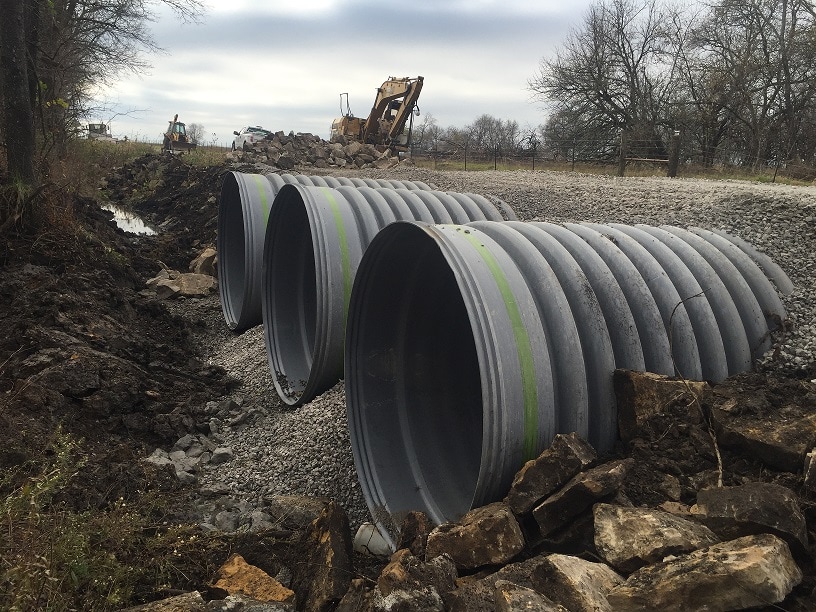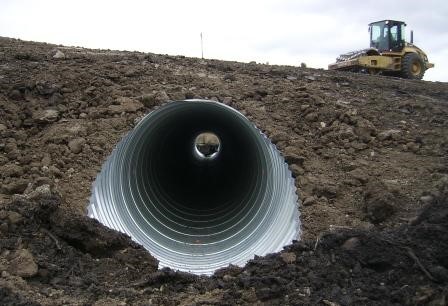Specialist Culvert Installation for Sturdy Infrastructure
Specialist Culvert Installation for Sturdy Infrastructure
Blog Article
Mastering Culvert Installment: Increase Your Land Drainage Efforts
From choosing the appropriate materials to carrying out finest methods, understanding culvert installation can considerably boost the performance and durability of your land drain system. By comprehending the details of culvert setup, you can maximize your drain efforts and make certain lasting land usage methods.
Relevance of Culvert Installment
Making certain appropriate culvert installment is critical for maintaining reliable land drainage systems. Culverts play an essential role in taking care of water flow, stopping erosion, and keeping the structural stability of roadways, bridges, and various other framework. Appropriate setup of culverts assists to transport water far from roads and buildings, decreasing the danger of flooding and water damage. Additionally, well-installed culverts aid in preventing debris build-up, which can cause obstructions and reduced water flow.
Correct Sizing and Placement

Correct placement of culverts is just as critical. Culverts must be placed at the cheapest factor of the location requiring drainage to ensure efficient water flow.
Material Choice Tips
Choosing the ideal products is extremely important in making certain the durability and functionality of culverts for effective land drainage systems. When selecting materials for culvert setup, it is vital to take into consideration variables such as the water circulation price, soil structure, and environmental conditions of the site.
Among one of the most typical materials used for culverts is corrugated metal (Tree removal). Corrugated steel culverts are sturdy, cost-efficient, and simple to set up. They appropriate for areas with high water circulation prices and can endure heavy lots. Another prominent option is concrete culverts, which offer excellent stamina and long life. Concrete culverts are perfect for locations susceptible to corrosion or when a longer life span is wanted.
For environmentally delicate locations, plastic culverts might be favored. Additionally, in locations where all-natural appearances are essential, materials like rock or wood can be used to construct culverts that mix seamlessly into the surroundings.
Installment Techniques and Best Practices
Offered the crucial significance of material selection in making certain the functionality and long life of culverts, the installation methods and best techniques play a crucial duty in the total success of land water drainage systems. Appropriate installation is crucial to stopping problems such as leakages, collapses, or obstructions that Culvert installation can compromise the effectiveness of the culvert.

During installment, care has to be taken to straighten the culvert correctly and supply correct support to stop deformation. Backfilling needs to be done gradually and compressed in layers to avoid spaces and negotiation. Proper compaction is important to avoid changing or sinking of the culvert in time.

Maintenance and Long-Term Care
Executing an extensive maintenance plan is essential for ensuring the longevity and reliable efficiency of culverts in land drain systems. Routine evaluations ought to be conducted to check for any kind of indicators of damages, blockages, or erosion that could endanger the functionality of the culvert. Cleaning debris such as fallen leaves, branches, and sediment is essential to stop blocking and keep the circulation capacity of the culvert. Greenery control around the culvert location is also crucial to prevent roots from triggering structural damage.
In addition, dealing with any problems promptly and making essential repair services or replacements can assist prevent costly problems in the long run. Routine upkeep tasks might include cleaning, fixing joints, reinforcing inlet and electrical outlet structures, and guaranteeing appropriate incline and alignment of the culvert. Maintaining detailed documents of upkeep activities, assessments, and repairs is crucial for tracking the problem of the culvert over time and preparing future upkeep needs. By staying aggressive and implementing a detailed maintenance plan, land drain systems can run effectively and effectively for many years ahead.
Final Thought
To conclude, understanding culvert installation is essential for effective land drain. Appropriate sizing, placement, material choice, setup methods, and maintenance are vital factors to take into consideration. By adhering to best techniques and executing long-lasting care techniques, landowners can increase their drain efforts and ensure the longevity and functionality of their culverts. It is important to prioritize these elements to stop water damages, erosion, and other expensive problems on the residential property.
Report this page